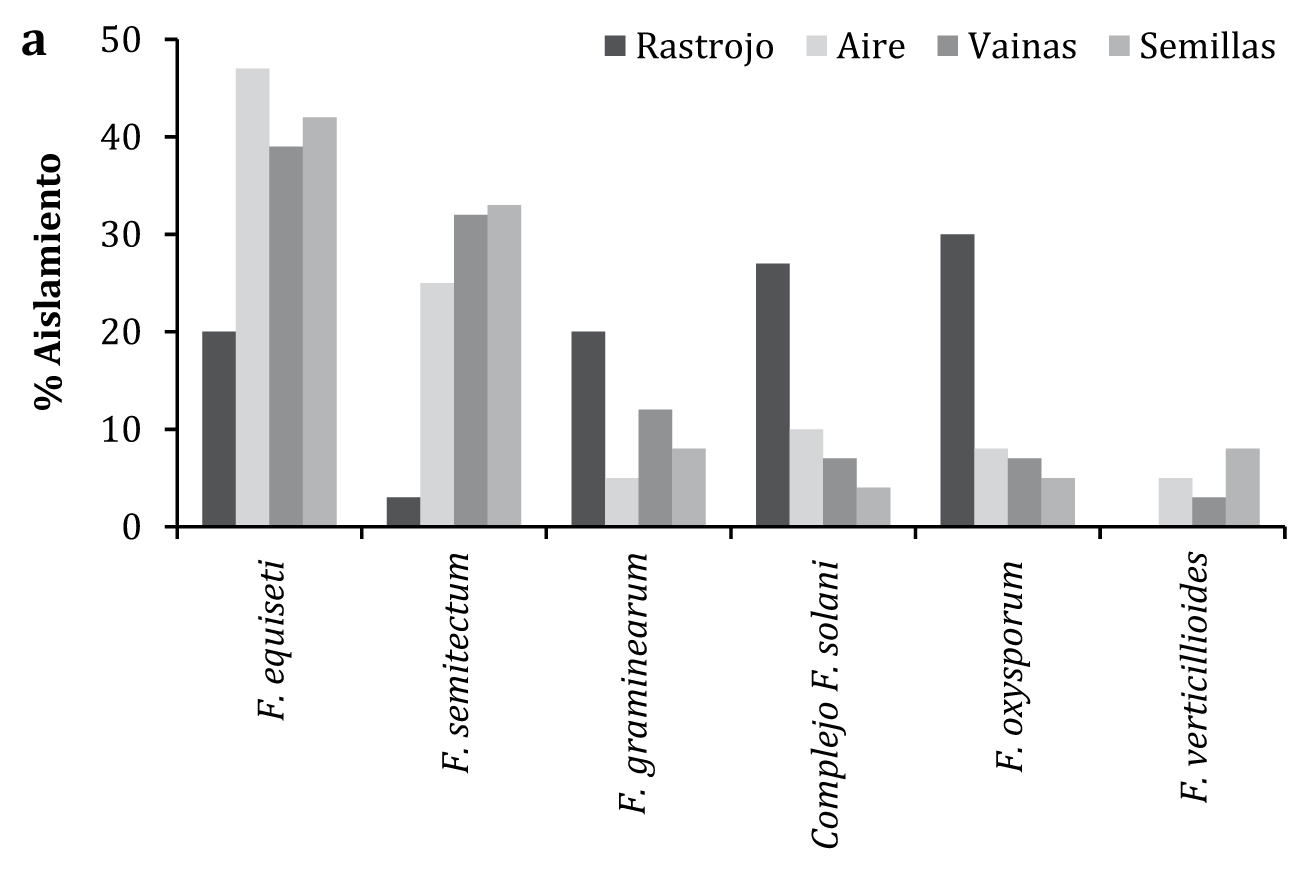Inoculum sources of potential toxigenic Fusarium species in the soybean agroecosystem
Keywords:
soybean, Fusarium species, inoculum sources, deoxynivalenolAbstract
Most of the studies of diversity, toxigenic potential and mycotoxin occurrence respect to Fusarium species have focused on wheat and maize, and there is little information on soybean crop. Our aims in the present study were to: evaluate the inoculum sources of toxigenic Fusarium species associated with soybean during crop reproductive stages; determine the occurrence of deoxynivalenol (DON) and nivalenol (NIV) in soybean seeds and characterize the trichothecenes profile of F. graminearum strains. A high incidence of Fusarium spp. was observed in all inoculum sources evaluated. Fusarium equiseti was the dominant species in air, pods and seeds of both stages, while strains belonging to F. solani complex and F. oxysporum were dominant in both corn and peanuts residues. Respect to F. graminearum, the results show that the crops residues would source more relevant than the surrounding air of crop, something that had not been explored previously in soybean. Moreover, levels of F. graminearum isolates were greater on pods than on seeds that showed a low incidence of DON contamination.

Downloads
Published
Issue
Section
License
Aquellos autores/as que tengan publicaciones con esta revista, aceptan las Políticas Editoriales.


